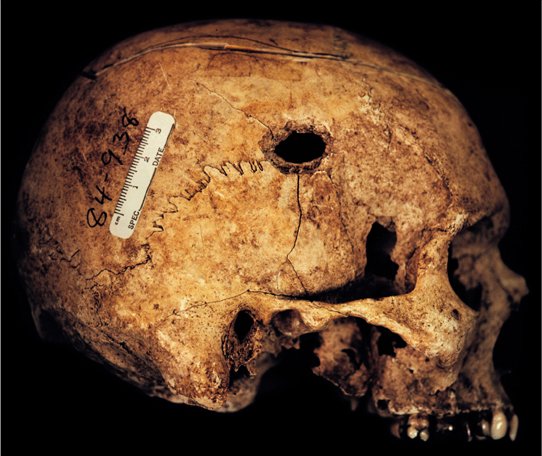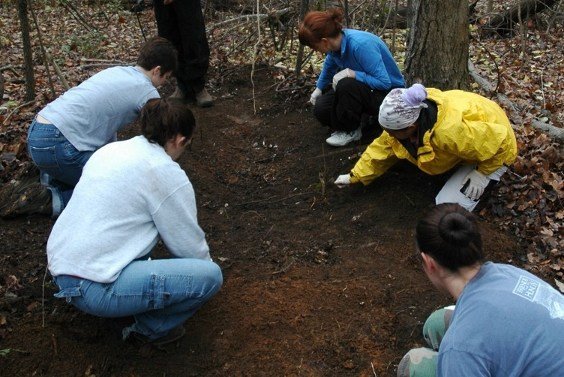Forensic anthropology is perhaps one of the most spectacular and interesting fields in crime scene investigation. Anthropology is the science that studies humankind, culturally and physically, in all times and places, while forensic anthropology takes that knowledge and applies it in a legal context, hence the ‘forensic’ in the term.

The basics of forensic anthropology
A significant part of this field is human osteology – the study of the human skeleton. Why do human bones play such an important part in the forensic investigation, you ask? The answer is quite simple: in many cases, the body or bodies is/are in an advanced state of decomposition, or have been burned, mutilated, and are unrecognizable as a result. Bones on the other hand are the most resilient part of the human body, so if there’s a right place to look for clues, that’s the bones.
A forensic anthropologist should have broad knowledge covering several (more or less) related fields, because basically, he combines the study of physical anthropology, which studies biological mechanisms with knowledge of osteology, which deals with skeletons, all applied in a legal setting. But a to work in this field, you have to have at least basic knowledge of biomechanics, archaeology, physics, and more.
Forensic anthropology includes archaeological excavation, as well as examination of hair, insects, facial reproduction, medicine, but still, the most important job for such a forensic is to identify a decadent body based on the evidence – and there is more use for this than you might think. Regardless of whether the skeleton is , prehistoric, historic, or modern, and regardless of the conditions in which it was found, the main goals of an osteological analysis are the same: to reconstruct as much as possible about a person’s life from a thorough examination of his or her bones after death.

A small example
Say John Smith is doing some excavations to build a new house on the land he just bought; during these excavations, he makes a macabre discovery: a coffin, with a skeleton inside. A forensic anthropologist comes at the scene and notices that the coffin was sealed using nails, thus indicating a historic death, rather than a recent one. Or, if this is not the case, he will determine as much information as possible, such as race, sex, stature, age of death, looks, injuries or characteristic signs, etc.
There aren’t numerous people at the moment working in this field, but the work is extremely variable and flexible; it is also quite challenging, and it never becomes monotonous or boring. Many forensic anthropologists are professors (or at least start out as professors), serving as consultants whenever needed, at a crime scene or somewhere else. So if you see a physical anthropology teacher, than there’s a fair chance he serves as a forensic anthropology consultant.
However, recently, there has been a surge in forensic anthropology jobs; that’s not to say there is an abundance of them, but that compared with previous decades, there are many of them. You aren’t just limited to working with the police, you could work for an investigation bureau, or a private firm, or a law company, in archaeology, etc. The offers vary.
Still, the odds are you will be doing something else aside from this job. But that’s not to say you’re not important for crime scene investigations – on the contrary! It is only you who can provide extremely valuable information for the crime scene analysts, while also doing some work in the lab and uncovering the truth. A forensic anthropologist is a very valuable asset to most investigations, providing useful information that is both humane and useful in the investigation. Humane because he is the one who performs facial reconstructions, which is extremely important. Most of the times, the people found dead have been missing for quite a while, so identifying them when there is no other way provides much needed closure for the family and friends of the deceased. Basically, your work will be to determine the age at death, sex, population affinity, stature, abnormalities and/or pathology, and idiosyncrasies to (usually) modern skeletal material. This is also growing in importance at mass fatality sites, such as the 2001 terrorist attack at WTC, where identification of the deceased as soon as possible was very important.
Other information
Anthropology is a very of science that includes many specialties which usually fall under the areas of cultural anthropology, archaeology, linguistics, or physical anthropology. The one thing that all anthropologists have in common is that they are interested in the study of human beings.
Another interesting thing is that the forensic anthropologist is the one responsible for taking care of the ‘body farm’, an outdoor field laboratory analyzing post mortem change and degradation. The body farm serves the purpose of studying human decomposition in varied circumstances, to study and better understand the decomposition process in the purpose of extracting information. However, there are only several of them located throughout the world – it is best to start early and search for a forensic anthropology school which will offer thorough guidance and opportunities.
All in all, forensic anthropology provides a challenging and rewarding medium for work, where your education is extremely important. It is possible you won’t be able to work solely as a forensic anthropologist, but rather offer some consultation. However, the field is continuously growing and developing, so it is definitely one of the jobs you want to keep an eye out for.
Pictures via
Be sure to check the articles in the Forensic Anthropology series:
The salary, education and requirements for a forensic anthropologist
Forensic anthropology schools
Forensic anthropology videos
How forensic anthropologists find out information from bones
Forensic Anthropology Jobs: where and job description




 A typical program includes coursework in computer technology or computer science and criminal justice. Courses in related fields like psychology or sociology are often also required. Lab work that provides students with concrete experience gathering and examining evidence is another important component of most programs.
A typical program includes coursework in computer technology or computer science and criminal justice. Courses in related fields like psychology or sociology are often also required. Lab work that provides students with concrete experience gathering and examining evidence is another important component of most programs. Even though even now, most crime scene investigators are police officers, the number of civilians being hired for
Even though even now, most crime scene investigators are police officers, the number of civilians being hired for 
 Crime scene investigators know him best: Gary Ridgway (born Gary Leon Ridgway February 18, 1949) murdered numerous women in Washington during the 1980s and 1990s, earning his nickname (Green River Killer)when the first five victims were found in the Green River. He strangled them, usually with his arm, but sometimes using ligatures. After strangling the women, he would dump their bodies throughout forested and overgrown areas in King County.
Crime scene investigators know him best: Gary Ridgway (born Gary Leon Ridgway February 18, 1949) murdered numerous women in Washington during the 1980s and 1990s, earning his nickname (Green River Killer)when the first five victims were found in the Green River. He strangled them, usually with his arm, but sometimes using ligatures. After strangling the women, he would dump their bodies throughout forested and overgrown areas in King County. Mark Twitchell registered as a woman on an online dating service so he can lure his victim to the garage of a rented house. CSI agents agree that this is a very common ruse used by criminals to lure unsuspecting victims into their traps.
Mark Twitchell registered as a woman on an online dating service so he can lure his victim to the garage of a rented house. CSI agents agree that this is a very common ruse used by criminals to lure unsuspecting victims into their traps.